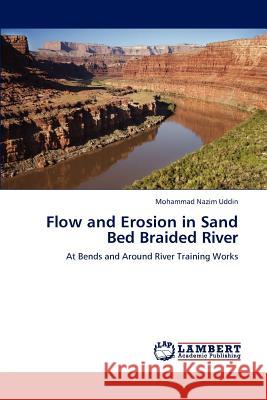Flow and Erosion in Sand Bed Braided River » książka
Flow and Erosion in Sand Bed Braided River
ISBN-13: 9783659173370 / Angielski / Miękka / 2012 / 264 str.
Riverbank erosion is a serious problem in Bangladesh. Different type bank protection works have been constructed along the Jamuna River. Almost every year some of the banks protection structures are damaged. A study was conducted: (i) to investigate flow and erosion processes around bank protection works, (ii) to investigate flow and erosion processes at bends (iii) to develop of an analytical erosion prediction model and, (iv) to integrate indigenous and technical knowledge for sustainable erosion management. It is revealed that the change of morphology, oblique flow generation by sand bar and dune movement mainly govern the failure of the hardpoint. The reasons of the failure of the RCC spurs are as follows: generation of oblique flow as a result of upstream morphology, strong parallel flow upstream of the spurs and development of deep channel due to flow circulation normal to the spurs. It is found that the amplified shear velocity near the bank line and secondary current are the main causes of the higher rate of erosion at a bend. The developed analytical erosion prediction model is capable to estimate the rate of erosion along the secondary channel of a sand bed braided river.
Riverbank erosion is a serious problem in Bangladesh. Different type bank protection works have been constructed along the Jamuna River. Almost every year some of the banks protection structures are damaged. A study was conducted: (i) to investigate flow and erosion processes around bank protection works, (ii) to investigate flow and erosion processes at bends (iii) to develop of an analytical erosion prediction model and, (iv) to integrate indigenous and technical knowledge for sustainable erosion management. It is revealed that the change of morphology, oblique flow generation by sand bar and dune movement mainly govern the failure of the hardpoint. The reasons of the failure of the RCC spurs are as follows: generation of oblique flow as a result of upstream morphology, strong parallel flow upstream of the spurs and development of deep channel due to flow circulation normal to the spurs. It is found that the amplified shear velocity near the bank line and secondary current are the main causes of the higher rate of erosion at a bend. The developed analytical erosion prediction model is capable to estimate the rate of erosion along the secondary channel of a sand bed braided river.











